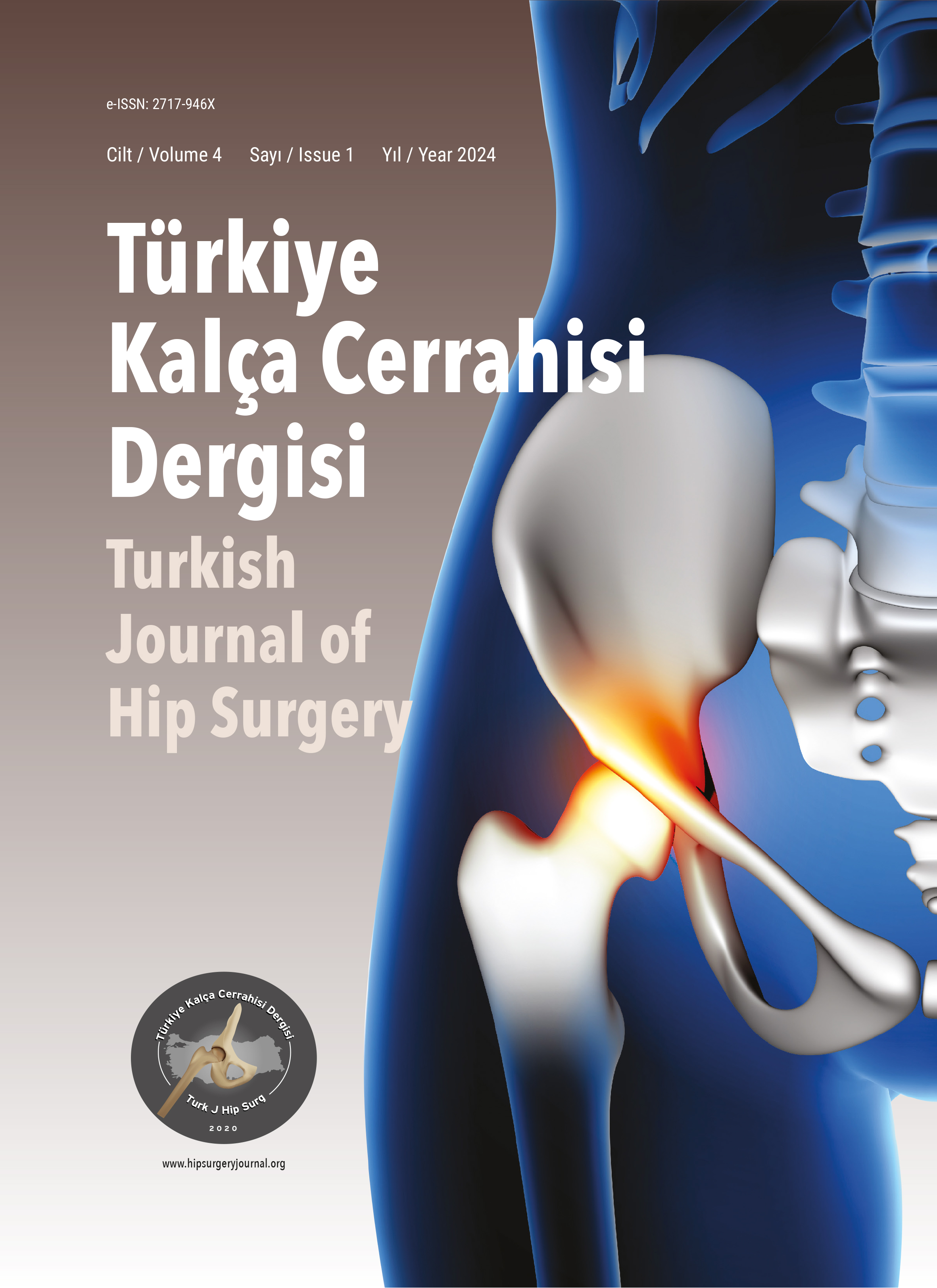
Atraumatic Fracture in Hip Modular Tumor Resection Prosthesis: A Case Report
Muhammed Cüneyd Gunay, Mustafa KavakDepartment Of Orthopedics And Traumatology, Osmangazi University Faculty Of Medicine, Eskişehir, TurkeyBackground: As a result of advances in adjuvant therapy, the 5-year survival rate of malignant bone tumors has increased from 20% to 70%. Similarly, longer survival times are observed as a result of advances in medical treatment of metastatic cancer patients. In addition, after lungs and livers, bones are the third most common site of metastasis in cancer patients. Therefore, reconstruction with modular tumor resection prostheses is increasingly used. In addition, the reported complication rates are five to ten times higher than those seen in normal joint arthroplasty. In this article, we present a non-traumatic fracture of a modular tumor resection prosthesis (ESTAS Medical, Sivas, Turkey) at the junction of the intramedullary nail and the prosthesis interconnection. No similar mechanical complication
cases of this prosthesis were reported in the literature we reviewed.
Case Description: A 73-year-old (82 kg, 163 cm, Body mass index: 30.86) female patient was admitted to the emergency department with complaints of hip pain and inability to walk. Due to the pathological fracture in the subtrochanteric region, proximal femur resection and reconstruction with tumor prosthesis were performed. The reconstruction was performed with a partial cementless modular tumor prosthesis (ESTAS Medical, Sivas, Turkey). During the follow-up, the patient was mobilized with a single cane and had no pain. In the 2nd year postoperatively, a non-traumatic fracture was observed between the femoral intramedullary nail and the prosthesis interconnection area. The fractured prosthesis area was reached by approaching the fracture site at the appropriate level over the old incision area, and revision surgery was performed by replacing the intracanal femoral nail and the interconnection segment piece. There was no wound site problem in
the patient and he was mobilized with support.
Conclusion: The modular structure of tumor resection prostheses, which are increasingly used, has many advantages, as well as a potential mechanical weakness as a result of the impressions we have obtained. With the advances in adjuvant treatments and the prolongation of survival, this mechanical weakness may lead to more complications. New designs and studies to eliminate this mechanical weakness, especially in the joints of the prosthesis, are highly needed.
Keywords: Tumor resection prosthesis, hip, fracture, tumor
Kalça Modüler Tümör Rezeksiyon Protezinde Gelişen Atravmatik Kırık: Olgu Sunumu
Muhammed Cüneyd Gunay, Mustafa KavakOsmangazi Üniversitesi Tıp Fakültesi, Ortopedi ve Travmatoloji Ana Bilim Dalı, EskişehirArkaplan: Adjuvan tedavideki gelişmeler sonucu, malign kemik tümörlerinin 5 yıllık sağ kalım oranları %20den %70e kadar çıkmıştır. Buna ek olarak metastatik kanser hastalarının tıbbi tedavisindeki gelişmeler sonucunda sağ kalım sürelerinde artış görülmüştür. Akciğer ve karaciğerden sonra kemik kanseri hastalarında üçüncü en yaygın metastaz yeridir. Dolayısıyla modüler tümör rezeksiyon protezleri ile rekonstrüksiyon giderek artan oranda kullanılmaktadır. Bununla birlikte bildirilen komplikasyon oranları normal eklem artroplastilerinde görülen oranlardan beş ila on kat daha fazladır (5,10). Bu yazıda modüler yapıda bir tümör rezeksiyon protezinin (ESTAS Medical, Sivas, Türkiye) intramedüller çivi ile protez ara bağlantısı birleşim yerinden travma dışı gelişen kırığını sunuyoruz. Literatürde bu tip proteze ait benzer bir mekanik komplikasyon vakası bildirilmemiştir.
Olgu: 73 yaşında (82 kg, 163 cm, Vücut kitle indeksi: 30,86) kadın hasta acil servise kalça ağrısı ve yürüyememe şikayetiyle başvurdu. Subtrokanterik bölgede patolojik kırık nedeniyle proksimal femur rezeksiyonu ve tümör protezi ile rekontrüksiyon yapıldı. Parsiyel çimentosuz modüler tümör protezi (ESTAS Medical, Sivas, Türkiye) ile rekonstrüksiyon yapıldı. Takiplerinde tek baston ile mobilize olan ve ağrısı olmayan hastanın, postoperatif 2. yılında femoral intramedüller çivi ile protez ara bağlantı bölgesi arasında travma dışı gelişen kırık görüldü. Kırık bölgesine uygun seviyeden ve eski insizyon bölgesi üzerinden yaklaşılarak kırık protez bölgesine ulaşılmasıyla, kanal içi femoral çivi ve ara bağlantı segment parçası değiştirilerek revizyon ameliyatı yapıldı. Hastada yara yeri sorunu görülmedi ve destekli olarak mobilize edildi.
Sonuç: Giderek artan sıklıkta kullanılan tümör rezeksiyon protezlerinin modüler yapısı sağladığı birçok avantajın yanında elde ettiğimiz izlenimler sonucunda potansiyel bir mekanik zayıflık da taşımaktadır. Adjuvan tedavilerdeki gelişmelerle birlikte sağ kalım sürelerinin uzaması ile bu mekanik zayıflık daha çok komplikasyona yol açabilir. Özellikle protezin birleşim yerlerindeki bu mekanik zayıflığın giderilebilmesi için yeni tasarımlara ve çalışmalara ihtiyaç vardır.
Anahtar Kelimeler: Tümör tipi protez, kalça, kırık, tümör
Manuscript Language: Turkish









